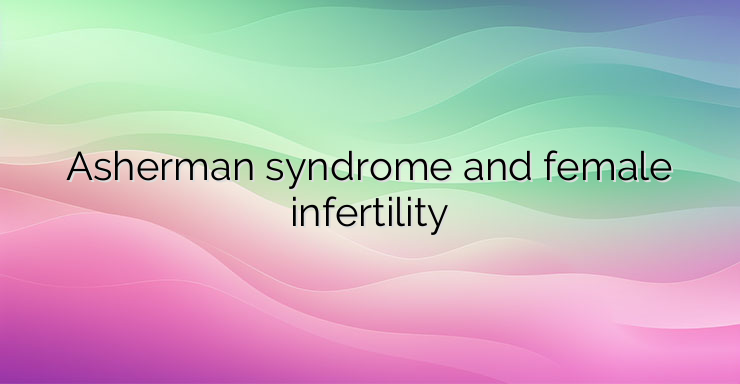Every year, millions of women struggle to create or increase their family. Infertility, or the inability to conceive after at least 6 months, affects 10% of women in Europe. Most cases of infertility are common and easily identified by doctors. These include endometriosis, ovarian failure and tubal factors. However, there are rare conditions that can be just as serious. Asherman syndrome is one such condition affecting the integrity of the uterus. Asherman syndrome is a rare, acquired condition with excess connective tissue scarring in the uterus. Scars appear on the lining of the endometrium and are the result of improper healing. These are common in other situations, but in Asherman’s disease, the walls of the uterus can harden and “stick together.” However, bands of fibrous tissue reduce the size of the uterus, making pregnancy difficult. Women with Asherman’s struggle to conceive and are prone to multiple miscarriages. Asherman syndrome is an acquired condition, meaning it develops as a response to trauma to the uterus. The most common causes of Asherman’s syndrome include: Scarring from previous uterine surgery, such as dilation and curettage; Infection of the pelvic area or reproductive organs; Endometriosis; Side effects of radiation therapy. The majority of women with Asherman syndrome have irregular or absent periods. Some women experience pain when their period is due, but no bleeding. This may mean that they are menstruating, but the blood cannot leave the uterus because the outlet is blocked by fibrous tissue. Of course, if menstruation is scanty, irregular or absent, it may be due to another condition, such as: Pregnancy; Stress; Sudden weight loss; Obesity; Taking contraceptive medications; Menopause; Polycystic ovary syndrome. Some women with Asherman’s syndrome are unable to conceive or have recurrent miscarriages. Pregnancy is possible if the patient suffers from Asherman’s syndrome, but adhesions in the uterus can pose a risk to the developing fetus. The risks of miscarriage and stillbirth will also be higher than in women without the condition. Asherman’s syndrome also increases the risk during pregnancy of: Placenta previa; Placenta increta; Excessive bleeding. Asherman’s can be serious if left untreated. Of course, infertility and repeated abortions are a direct result. However, some women who manage to carry the fetus to term may have complications at birth. The surgeon may use either hysteroscopy or hysterosalpingography to diagnose and treat the condition. During hysterosalpingography, the surgeon cuts away a scar with surgical instruments. From there on, at the discretion of the attending physician, estrogen may be added further to restore the lining of the endometrium. Studies show that 67% of women had a live birth 1-4 years after surgery.References: 1. Asherman JG. Amenorrhoea traumatic (atretica). J Obstet Gynaecol Br Emp. 2. Conforti A, Alviggi C, Mollo A, De Placido G, Magos A. The management of Asherman syndrome: a review of literature. Reprod Biol Endocrinol. 2013 3. Schenker JG, Margalioth EJ. Intrauterine adhesions: an updated appraisal


Leave a Reply